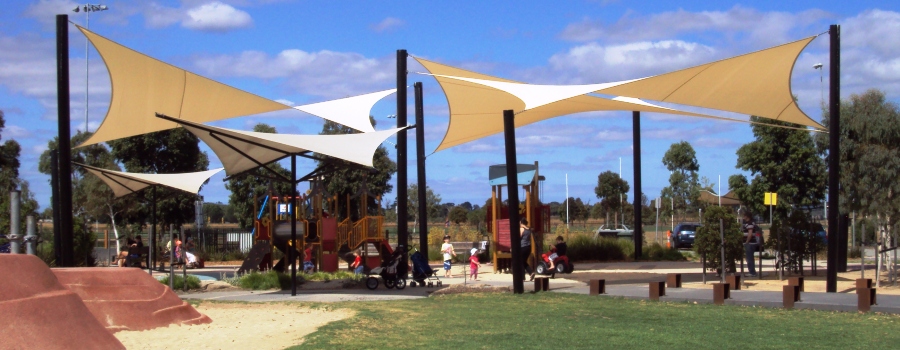Tensile structures are becoming increasingly popular in modern architecture and design. From commercial building exteriors to residential patio covers, tensile structures can provide a unique, eye-catching aesthetic while protecting against harsh weather conditions. Here are five examples of tensile structure designs that use the latest materials and technologies to create something truly special.
Single-layer membrane
One of the most popular tensile structures is the single-layer membrane, which offers several advantages for architects and engineers. A single-layer membrane is a lightweight fabric structure composed of only one layer of material, usually made from high-strength fabrics such as PTFE or ETFE. These membranes are usually constructed with tensioning cables and steel frames to ensure stability and strength. As the name implies, these structures have only one layer, making them incredibly light and easy to install compared to other tensile structures like double-layer or triple-layer membranes. Single-layer membranes are also highly customizable, which makes them ideal for architectural projects requiring unique shapes or designs.
Double-layer membrane
The double-layer membrane tensile structure design is a modern architectural solution for large-scale outdoor structures. This innovative design features two layers of fabric or membrane that are held together by tension and suspended from a steel frame, creating an attractive aesthetic that can be used in various settings. The double-layer construction also offers superior protection from the elements, making it ideal for use in extreme climates and conditions. The double-layer membrane tensile structure is light yet strong, allowing architects to create impressive designs without sacrificing the structural integrity of the building. It also provides shade and insulation from the sun’s rays, reducing solar heat gain and keeping energy costs low during hot summer. Additionally, its versatility allows it to be designed with different shapes, sizes, and colours to fit any environment or application.
Cable network system
The tensile structure design is a specialized field of engineering that considers the properties of tension and compression to create innovative structures. The cable network system is one type of tensile structure design that allows for maximum strength with minimal material use. It typically consists of interconnected cables connected to columns or posts, forming a web-like structure.
The advantages of this type of tensile system include its light weight, flexibility and cost efficiency since it requires fewer materials than traditional building methods. Additionally, it can withstand large forces such as wind and seismic activity when adequately engineered according to local codes and standards. Cable networks can also be used in unique shapes and forms due to their high degree of flexibility, allowing for creative designs that would not be possible with conventional building methods.
Tensegrity system
Tensile structure design has become an increasingly popular choice for architects and engineers seeking to create stunning works of art. The Tensegrity system is an exciting example of engineering that uses tension and compression forces in synergy to form solid and lightweight structures. This innovative approach is widely used in constructing bridge spans, sports stadiums, large canopies and other architectural wonders.
The Tensegrity system creates a network of components that work together to produce strong and lightweight structures by combining tensile elements such as cables or rods with compression elements like struts or columns. This method allows designers to reduce the amount of material needed while simultaneously providing maximum durability. Additionally, these structures are highly efficient at dealing with wind loads, making them ideal for applications ranging from bridges to large canopy designs.
Truss systems
The tensile structure design is a highly specialized process that involves the use of truss systems to create structures that are both aesthetically pleasing and structurally sound. Truss systems rely on triangular load-bearing units, allowing engineers to create strong, lightweight structures that can support a wide range of loads.
These trusses can be used for many projects, including roofs, bridges and large outdoor shade covers. They also come in various shapes and sizes, making them suitable for any specific application. With the help of modern computer software, designers can accurately model how the trusses will behave under various conditions before beginning construction. This helps to ensure that the structural integrity is maintained throughout its lifetime and allows for creative freedom when designing an attractive structure.
Tensile structure design – Using 3D to 2D pattern software.
The use of 3D to 2D pattern software is revolutionizing tensile structure design. It not only helps in creating models quickly and cost-effectively but also helps to accurately generate the precise patterns that are critical for a successful installation. This type of software also eliminates the need for expensive physical prototypes, which can be costly and time-consuming.
3D to 2D pattern software has become an invaluable tool for designers, engineers, and contractors when designing tensile structures. This computer program allows users to create precise patterns from any angle or size. This makes it easier to identify potential issues within the design before construction begins, allowing for faster and more accurate installations. Additionally, this type of software from mPanel allows users to monitor their projects during production with unparalleled accuracy and detail.
